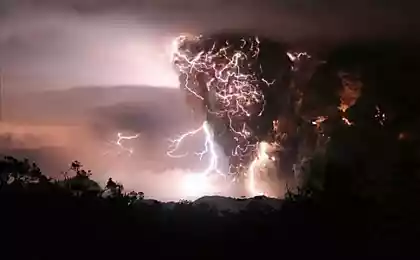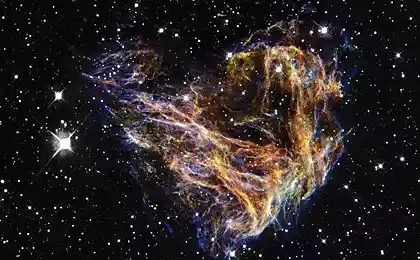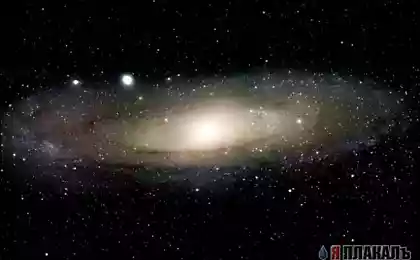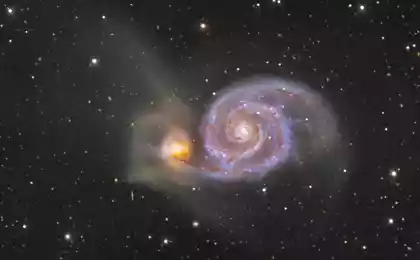A bright flash lit up the sky supernova planet Earth in 1006 AD
Photo NASA, ESA, Zolt Levay (STScI). This composite picture combines data in the X-ray (blue), optical (yellowish tint) and radio (red) bands. I> sup>
object, known as SN 1006, extends to 60 light-years, representing the remnants of stars like white dwarf. Were once part of a binary star system compact white dwarf its gravitational force overtighten the substance with the companion star. The accumulated surplus weight, in the end, has launched a thermonuclear reaction that destroyed the dwarf star.
Such supernovae are Type Ia and always emit about the same amount of energy, about 10 51 sup> erg. Due to this stability, they play a very important role in astronomy and serve as "standard candles" or beacons, which determine distances in the universe. Based on the fact that the explosion energy is constant, and the universe at large scales almost homogeneous, astronomers can calculate by the number has come down to the Earth's energy, at what distance is about the place of the explosion. Thanks to this technique, it was found that the distance to the supernova of 6850 light years.
the highest quality photo SN 1006 in X-rays with Chandra. It was composed in 2013 in honor of the 50th anniversary of X-ray astronomy. I> sup>
Chinese and Arab astronomers of those times were amazed scale events. Arabic astronomer Ali ibn Ridwan, while in Egypt, noted:
A new star is a disk-shaped body, which is in 2, 5 - 3 times brighter than Venus was. The sky brightened considerably due to its light zvezdy.Intensivnost light intensity slightly exceeds a quarter moon. Blockquote> In support of his words to the monks of the monastery of St. Gall, located at 47, 5 degrees north latitude, which in present-day Switzerland, irrespective of other astronomers also observed this event:
Miraculously, she then shrank in size, then blurred and sometimes quite died out. Star is on the horizon for about 3 months in the southern part of the sky outside of the constellations visible in the sky. Blockquote> This photo was published astronomer Tunku Tezelem in 2006 and dedicated to the thousandth anniversary of the supernova. It illustrates an exemplary brightness of this event in the night sky. I> sup>
Source: geektimes.ru/post/241046/























